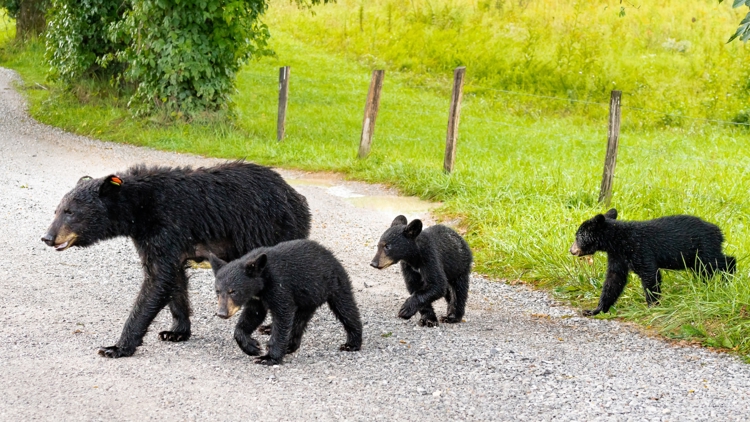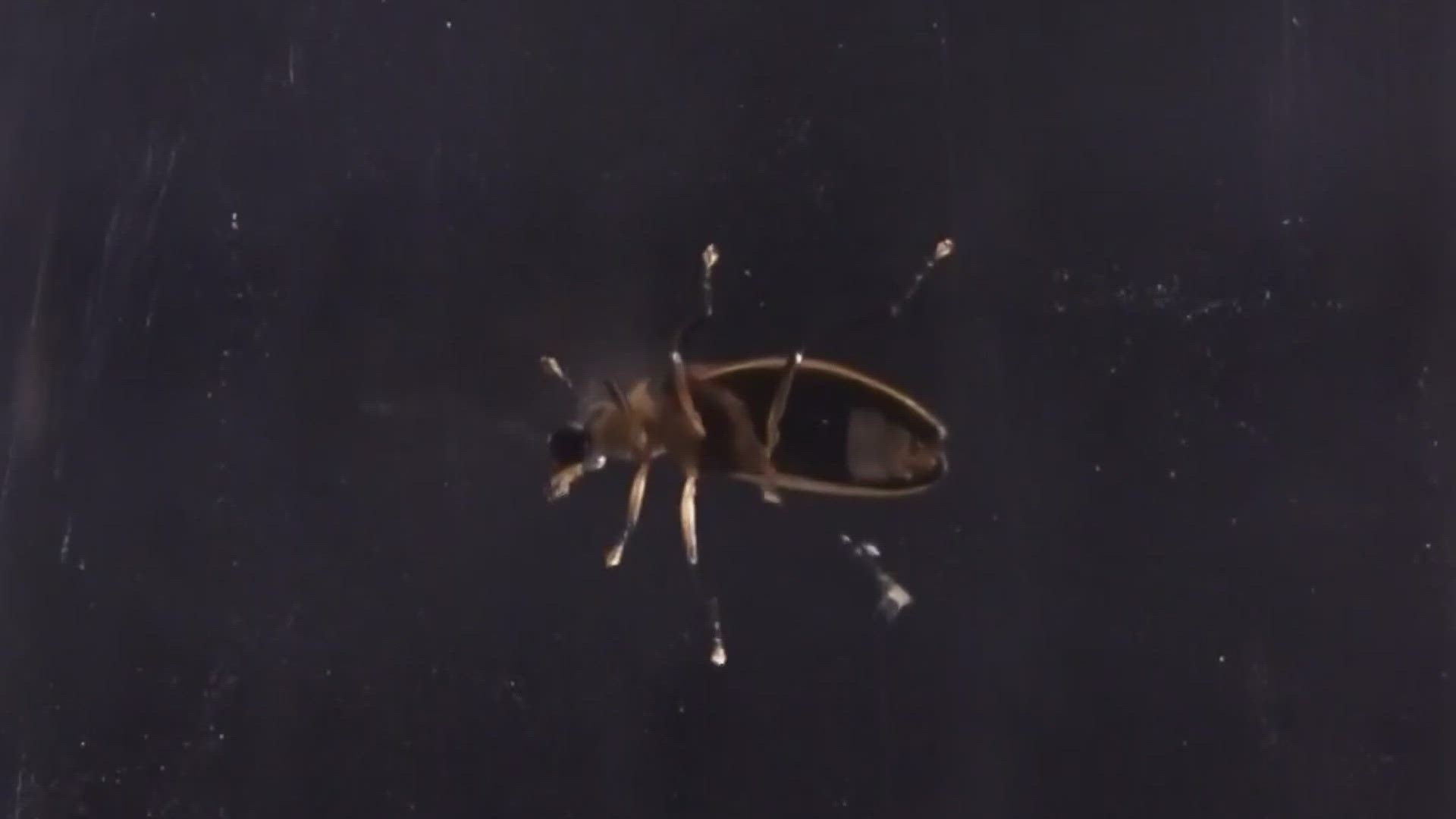KNOXVILLE, Tenn. — Bears in the Great Smoky Mountains are starting to be more active, and there are some mountain-sized tips to keep families and animals safe.
According to the Great Smoky Mountain National Park, there have been an average of 339 negative human-bear encounters annually over the last decade, with many more going unreported. GSMNP stresses that high bear activity can occur anywhere and that safety is not always guaranteed.
"Stay alert and be prepared to react appropriately during possible encounters, and always report any unusual bear interactions as soon as possible," the park said.
Dogs and bears
The GSMNP said that dogs and bears do not mix, with dogs not being allowed on most trails and always on a leash no longer than six feet long.
The park said visitors can still enjoy the Great Smoky Mountains with a dog by following some guidelines:
- Carry bear spray and know how to use it. Bear spray usually works from 30 feet away.
- Stay alert; music and phones are distracting.
- If you see a bear, turn around and leave.
- Don't let your dog bark at, harass, chase or corner a bear.
- If your dog gets into a fight with a bear, don't rescue it. You will get injured. Use bear spray.
GSMNP said dogs are involved in the majority of all physical encounters involving people and black bears.
"If your dog gets into an encounter with a bear, there's about a 50% chance it will be injured or killed—and an even higher chance you'll be injured if you intervene," the park said.
Six essential tips
BearWise provided six essential tips to keep safe with "Six At-Home BearWise Basics."
The first step is to never feed or approach bears.
"Intentionally feeding bears or allowing them to find anything that smells or tastes like food teaches bears to approach homes and people looking for more," BearWise said.
Other steps are to secure any garbage or recycling, remove bird feeders when bears are active and to never leave pet food outdoors.
"If you must feed pets outside, feed in single portions and remove bowls afterward," the organization said.
The final two of the six essential tips is to clean and store any grills or smokers and to alert any neighbors about bear activity seen in the area.
What to do if you see a bear
The biggest step stressed by both GSMNP and BearWise is for visitors to keep their distance.
- Do not allow the bear to approach you.
- If the bear is at a distance, feeding, or walking by and notices you but continues its natural behavior, no action is needed on your part. Proceed while continuing to observe the bear.
- If your presence causes the bear to change its behavior (stops feeding, changes its travel direction, watches you, etc.) you are too close.
Being too close to a bear may cause it to become aggressive, so keeping distance is key when it comes to watching the wildlife.
What to do if a bear sees you
The park provides many steps on what to do when being approached by a black bear.
- If the bear continues to follow you, stand your ground.
- If the bear gets closer, talk loudly or shout at it.
- Act aggressively to intimidate the bear.
- Act together as a group if you have companions. Make yourselves look as large as possible (for example, move to higher ground).
- Throw non-food objects such as rocks at the bear.
- Use a deterrent such as a stout stick.
The park also said to use bear spray if any is available, not to leave food for the bear and not to turn or run away.
If the bear has no interest in food and is becoming hostile, the park said to fight back aggressively and not play dead.
How to protect the bears
Something just as vital as keeping the visitors in the park safe, is keeping the bears safe as well. The most important step to keeping bears safe is throwing away trash.
"It changes the bear's behavior and causes them to lose their instinctive fear of humans. Over time, these bears may begin approaching people in search of food and may become more unpredictable and dangerous," the park said.
Park rangers will issue citations for littering, feeding bears and the improper storage of food within the park.
"These citations can result in fines of up to $5,000 and jail sentences lasting up to six months," the park said. "Visitors are urged to view all wildlife at a safe distance and to never throw food or garbage on the ground or leave it unattended. Garbage Kills Bears!"
Do not feed the bears under any circumstances, and do not approach a bear within 50 yards or any distance that could disturb the animal, the park said.
"If you see another visitor breaking these rules or encounter a bear in a picnic area, in a campground, on a trail, or in any other developed area, please call (865) 436-1230 or stop at a visitor center to report it," the national park said.



